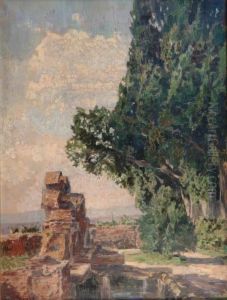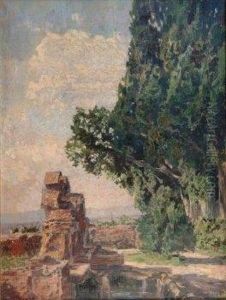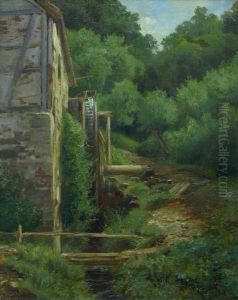Fanny Edle Geiger-Weishaupt Paintings
Fanny Edle Geiger-Weishaupt was a notable artist whose life and work spanned across the late 19th and early 20th centuries. Born in 1879, her contributions to the art world, although not as widely recognized as some of her contemporaries, showcase a unique blend of traditional and emerging styles of her time. Geiger-Weishaupt's artistic journey is reflective of the broader shifts in European art, especially amidst the backdrop of significant historical events and cultural transformations.
Fanny Edle Geiger-Weishaupt's early life was marked by an exposure to the arts, which was not uncommon for individuals of her social standing during that period. The details of her education and initial forays into the art world are scant, but it is known that she was active in a time when women artists were beginning to gain recognition, albeit slowly and with considerable resistance. Her marriage to Weishaupt, often included in her full name, reflects the convention of the era, where women's identities were frequently tied to their marital status.
Throughout her career, Geiger-Weishaupt experimented with various mediums and subjects, showing a versatility and adaptability to the changing artistic landscapes. Her works, while perhaps not as prolific or as publicized as those of her male counterparts, contributed to the richness of early 20th-century European art. She navigated through the challenges of World War I and II, periods that deeply affected artists and their work, influencing themes of despair, hope, and introspection.
Fanny Edle Geiger-Weishaupt's death in 1953 marked the end of a life that was intimately intertwined with the evolution of modern art. Her legacy, though not as prominently celebrated as it deserves, provides insight into the contributions of women to the arts during a pivotal era. Her work remains a testament to the enduring spirit of creativity and resilience in the face of societal and personal challenges.


